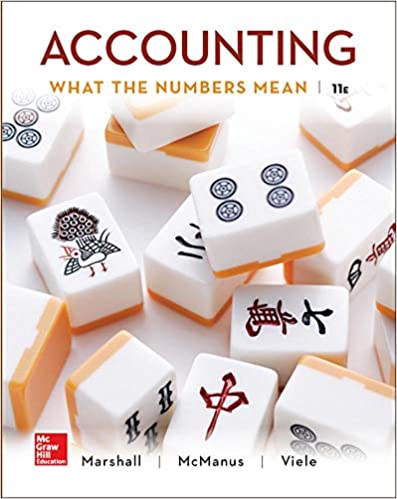
Accounting: What the Numbers Mean 11th Edition by Wayne McManus,Daniel Viele,David Marshall
Edition 11ISBN: 978-1259535314
Accounting: What the Numbers Mean 11th Edition by Wayne McManus,Daniel Viele,David Marshall
Edition 11ISBN: 978-1259535314 Exercise 25
LIFO versus FIFO-impact on ROI Mannisto, Inc., uses the FIFO inventory cost flow assumption. In a year of rising costs and prices, the firm reported net income of $1,500,000 and average assets of $10,000,000. If Mannisto had used the LIFO cost flow assumption in the same year, its cost of goods sold would have been $300,000 more than under FIFO, and its average assets would have been $300,000 less than under FIFO.
Required:
a. Calculate the firm's ROI under each cost flow assumption (FIFO and LIFO).
b. Suppose that two years later costs and prices were falling. Under FIFO, net income and average assets were $1,800,000 and $12,000,000, respectively. If LIFO had been used through the years, inventory values would have been $200,000 less than under FIFO, and current year cost of goods sold would have been $100,000 less than under FIFO. Calculate the firm's ROI under each cost flow assumption (FIFO and LIFO).
Required:
a. Calculate the firm's ROI under each cost flow assumption (FIFO and LIFO).
b. Suppose that two years later costs and prices were falling. Under FIFO, net income and average assets were $1,800,000 and $12,000,000, respectively. If LIFO had been used through the years, inventory values would have been $200,000 less than under FIFO, and current year cost of goods sold would have been $100,000 less than under FIFO. Calculate the firm's ROI under each cost flow assumption (FIFO and LIFO).
Explanation
(a) Calculate ROI of the firm under FIFO...
Accounting: What the Numbers Mean 11th Edition by Wayne McManus,Daniel Viele,David Marshall
Why don’t you like this exercise?
Other Minimum 8 character and maximum 255 character
Character 255


